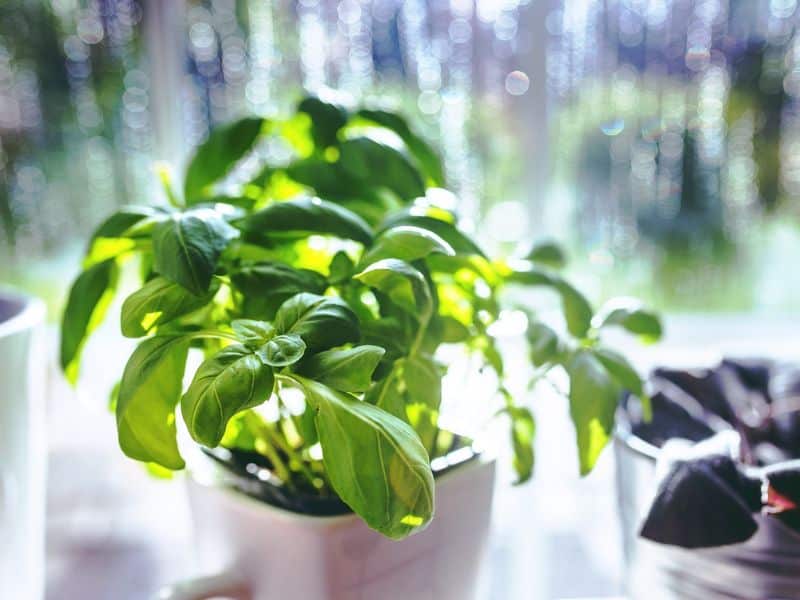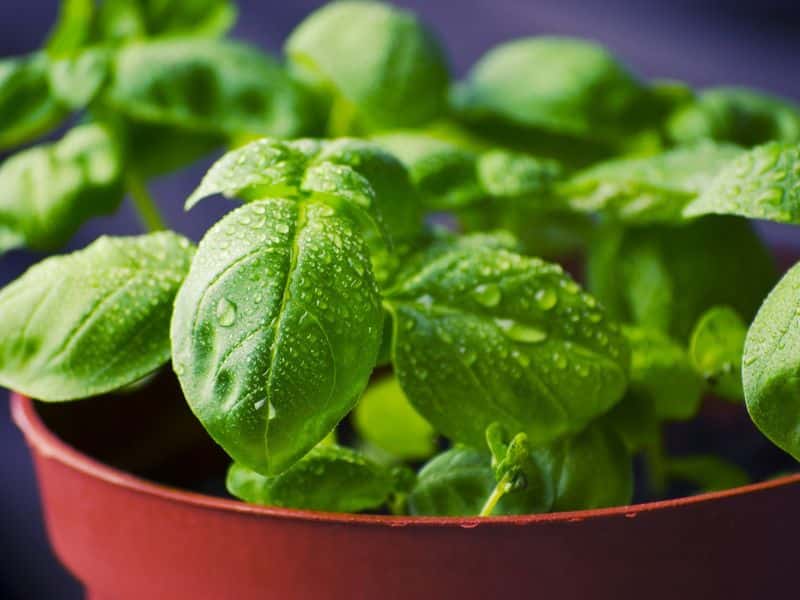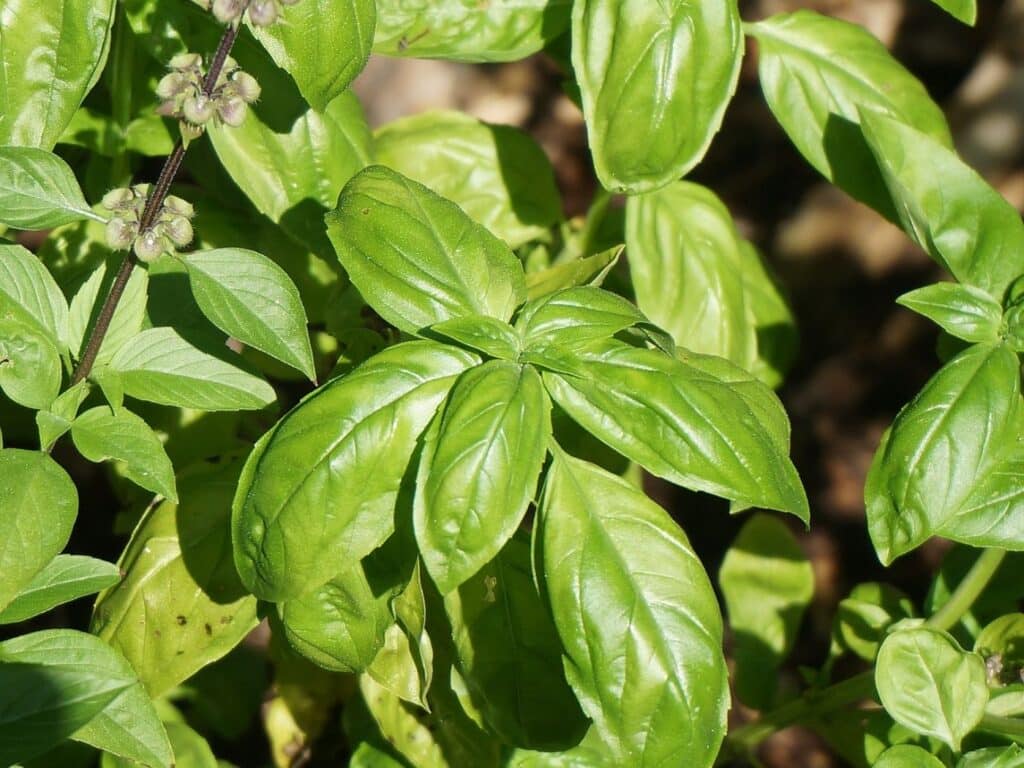Ever found yourself gazing at your beloved basil plant, only to find it’s wilting and turning yellow, despite your best watering efforts? You’re not alone. Overwatering is a common issue, often leading to a disheartened gardener and a drooping basil.
But don’t despair. Understanding the signs of an overwatered basil and knowing how to revive it can turn your gardening woes into a green thumb triumph.
This article will guide you on that journey, providing insights into why too much water is harmful and offering practical solutions to restore your basil to its former glory. So, let’s dive in and turn that wilting basil into a flourishing plant, shall we?
Signs of Overwatered Basil
Overwatering can be a prime culprit for your basil plant’s woes. In this section, we’ll walk you through the clear signs that your basil plant has been overwatered.
Yellowing Leaves
The first tell-tale sign of overwatering in a basil plant is yellowing leaves. Overwatered basil often struggles, causing the green leaves to turn into a pale, yellow hue. It’s not uncommon for the yellowed leaves to fall off, leaving behind bare stems.
Wilting and Limp Stems
An overwatered basil plant may look as if it’s thirsty because its stems begin to wilt and turn limp. That’s counterintuitive since you’d expect overwatered plants to be more robust. Yet, the excess water can cause the plant cells to become oversaturated and burst, resulting in wilting stems.
Root Rot Indications
Root rot is a major concern when it comes to overwatered basil. Too much moisture in the soil prevents the roots from breathing, leading to a dark, mushy mess.
If you suspect your basil has root rot, carefully remove it from its pot and inspect the roots. Healthy roots have a firm, white appearance, while rotting roots will be brown and slimy.
Mold Growth on Soil
Mold growth on the soil is another sign your basil could be overwatered. The stagnant water in the soil becomes a breeding ground for mold and fungi.
If you notice a white, fuzzy layer on the surface of your plant’s soil, it’s a clear indicator of overwatering. Dial down your watering regime and let the soil dry out before watering again.
Preventing Overwatering in Basil Plants

Overwatering your basil plants is a common issue, but with the right methods, it’s completely preventable. Let’s get into how you can avoid this gardening pitfall.
Choosing the Right Soil Mix
The soil mix you use plays a crucial role. Select a light, well-draining soil that promotes water movement and doesn’t allow for standing water.
Consider using a mix of peat moss, compost, perlite or vermiculite which are all engineered to reduce water retention and provide adequate aeration. This combination can create an optimal environment for your basil plant.
Understanding Watering Needs
Understanding the watering needs of your basil is key. Unlike some other herbs, basil prefers a somewhat consistent level of moisture. However, too much water can be harmful.
It’s best to water your plant deeply, then allow the top inch of soil to dry out before watering again. This process ensures that the roots get enough water without getting waterlogged.
Correct Pot Usage and Drainage
The kind of pot you use and its drainage capabilities can make or break your basil plant. Always use pots with holes in the bottom for drainage. After watering, check to ensure water is seeping out from these holes.
This means the water is passing through the soil and not lingering around your plant’s roots. If water isn’t exiting the pot, it may be a sign that the soil is overly saturated or the holes are blocked – both of which you’ll want to address swiftly to protect your basil from overwatering.
Steps to Revive Overwatered Basil

We’ve explored the pitfalls of overwatering your basil and the preventative measures needed. Now let’s focus on bringing your overwatered basil back to life.
Assessing the Damage
Start with a thorough check of your basil plant. Look for signs you’ve learned like yellow or brown leaves and wilted stems. Be keen on digging into the soil to identify saturated spots and signs of root rot. Remember, early detection is pivotal in salvaging your plant.
Adjusting Watering Techniques
Next, it’s time to modify how you water your basil. Key things you need to remember are
- Water less frequently: Basil prefers a ‘little and often’ approach rather than drenching it all at once.
- Use the right amount: Overwatering often happens due to excessive amounts, so ensure you give only as much as your basil can take.
- Consider the time of day: Morning watering works best for basil as it prevents prolonged dampness that can promote disease.
Implementing Soil and Potting Changes
The soil and the pot you use have a big role in maintaining the right moisture level. So, consider making changes in these areas.
- Upgrade to a well-draining soil mix: This kind of soil ensures excess water can efficiently escape.
- Use a pot with proper drainage: Pots without sufficient drainage holes can contribute to waterlogging.
Creating an Ideal Environment for Recovery
Finally, to rescue your overwatered basil, you’ll need to create an ideal recovery environment.
- Place your basil in a warm and well-lit spot: These conditions promote healthy growth.
- Ensure good airflow: This reduces the vulnerability of the basil plant to diseases.
- Regularly monitor the plant: Continual checking allows for timely intervention should there be a resurgence of the problem.
Maintenance Tips for Healthy Basil
Even with the best intentions, basil plants can suffer from overwatering. If you find yourself in this pickle, don’t panic! Let’s consider the necessary care adjustments and the perfect conditions for your basil plant.
Regular Monitoring and Care Adjustments
Remember, it’s critical to check on your basil regularly. Pay attention to signs of stress, like yellowing or wilting leaves and adjust your care regime immediately. If you spot any issues with your basil plant, make sure to take quick-action.
Over-watered basil can recover with quick changes in watering habits. Even the soil type used can impact the water retention, so choose a well-draining soil mix to avoid any potential complications.
Decrease watering frequency, and only water when the top inch of soil feels dry to the touch. If the soil feels heavy and wet, wait a bit longer before the next watering. Maintaining an appropriate watering schedule is an effective approach to keep your basil plant hearty and healthy.
Optimal Sunlight and Temperature Conditions
Just like every other plant, basil loves sunlight. It thrives best in warm conditions and a sunny spot is perfect. An ideal location for your basil is in a sunny window that receives at least six hours of direct sunlight daily.
Additionally, maintain an ambient indoor temperature between 60 and 75 degrees Fahrenheit. Higher or lower temperatures could bring about stress to your basil and this would discourage growth. With these steps in place, you’ll go a long way in keeping your basil plant robust and avoiding an over-watered situation.
Alternative Watering Methods for Basil
Redefine the watering game for your basil plants by adopting alternative watering techniques. This section will present a couple of methods that can help ensure your basil receives adequate hydration without running the risk of overwatering.
Using Self-Watering Pots
Opting for self-watering pots can be quite advantageous, especially if you’re prone to overwatering or unable to water your basil regularly. Self-watering pots contain a reservoir at the bottom that steeps the basil roots in water, allowing them to drink up as per their own needs.
This way, you’re providing consistent access to water without the risk of waterlogging your basil’s roots. They’re a gardener’s favorite for their hassle-free watering mechanism and ability to conserve water and nutrients.
Implementing Drip Irrigation Systems
Another worthy consideration is the use of drip irrigation systems. Drip irrigation precisely delivers water to your basil plant’s roots, eliminating the dangers of overwatering and under-watering.
The system uses hoses or tubing with small emitters that slowly release water directly into your basil’s soil.
Plus, its modify-able design lets you decide the watering frequency and duration. The right drip irrigation system will not only hydrate your basil efficiently but also create ideal growing conditions by maintaining consistent soil moisture.
Up next: Overwatered Lemon Tree: Signs, Solutions, and Preventive Measures







